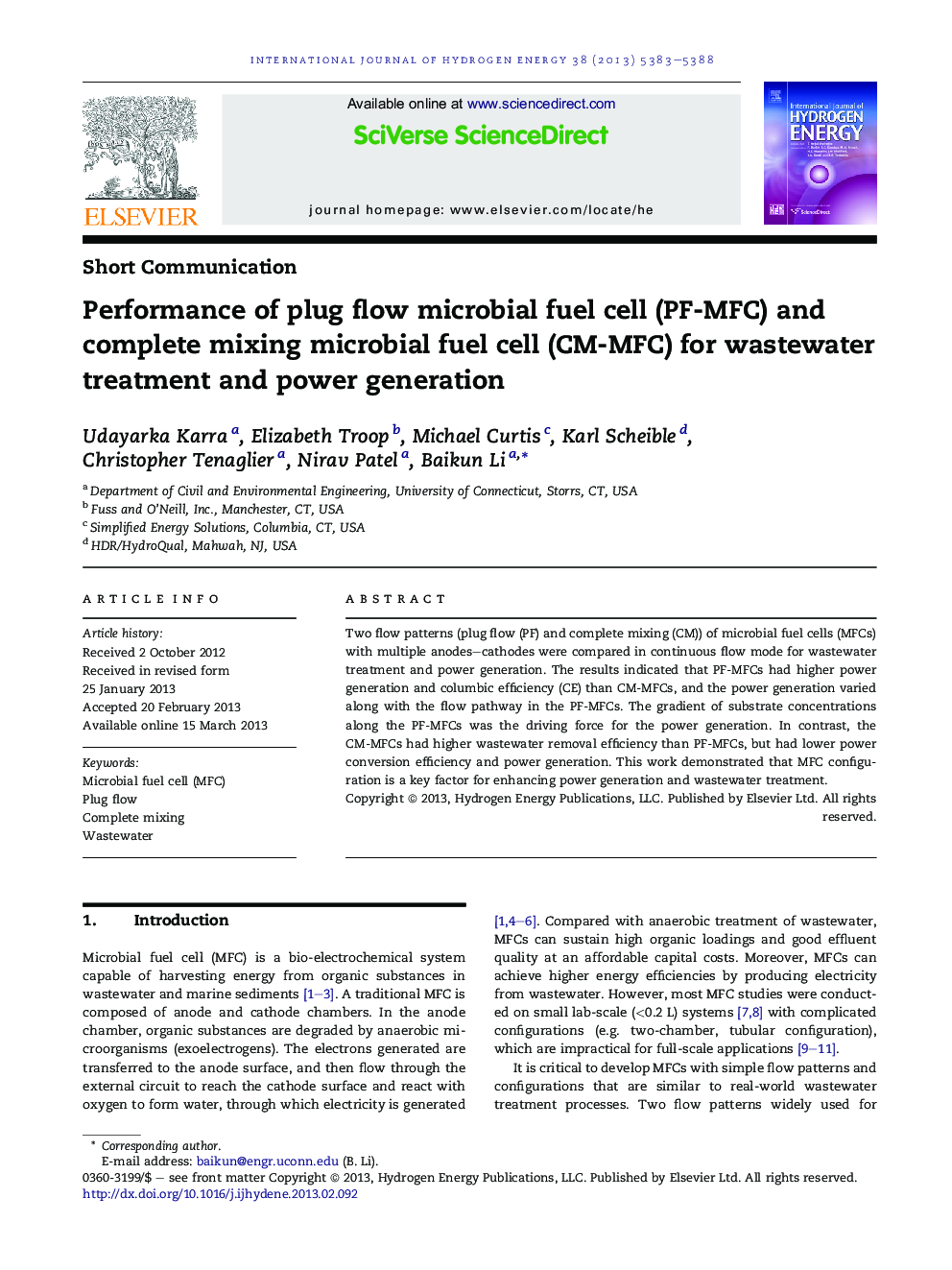| Article ID | Journal | Published Year | Pages | File Type |
|---|---|---|---|---|
| 1277726 | International Journal of Hydrogen Energy | 2013 | 6 Pages |
Two flow patterns (plug flow (PF) and complete mixing (CM)) of microbial fuel cells (MFCs) with multiple anodes–cathodes were compared in continuous flow mode for wastewater treatment and power generation. The results indicated that PF-MFCs had higher power generation and columbic efficiency (CE) than CM-MFCs, and the power generation varied along with the flow pathway in the PF-MFCs. The gradient of substrate concentrations along the PF-MFCs was the driving force for the power generation. In contrast, the CM-MFCs had higher wastewater removal efficiency than PF-MFCs, but had lower power conversion efficiency and power generation. This work demonstrated that MFC configuration is a key factor for enhancing power generation and wastewater treatment.
► MFCs with two flow patterns (PF and CM) were compared in terms of power generation and wastewater treatment. ► First, PFMFCs had high power generation and power conversion efficiencies. ► Second, CMMFCs had high COD removal efficiencies. ► Third, flow patterns and MFC configurations played important roles in MFCs treating wastewater.
